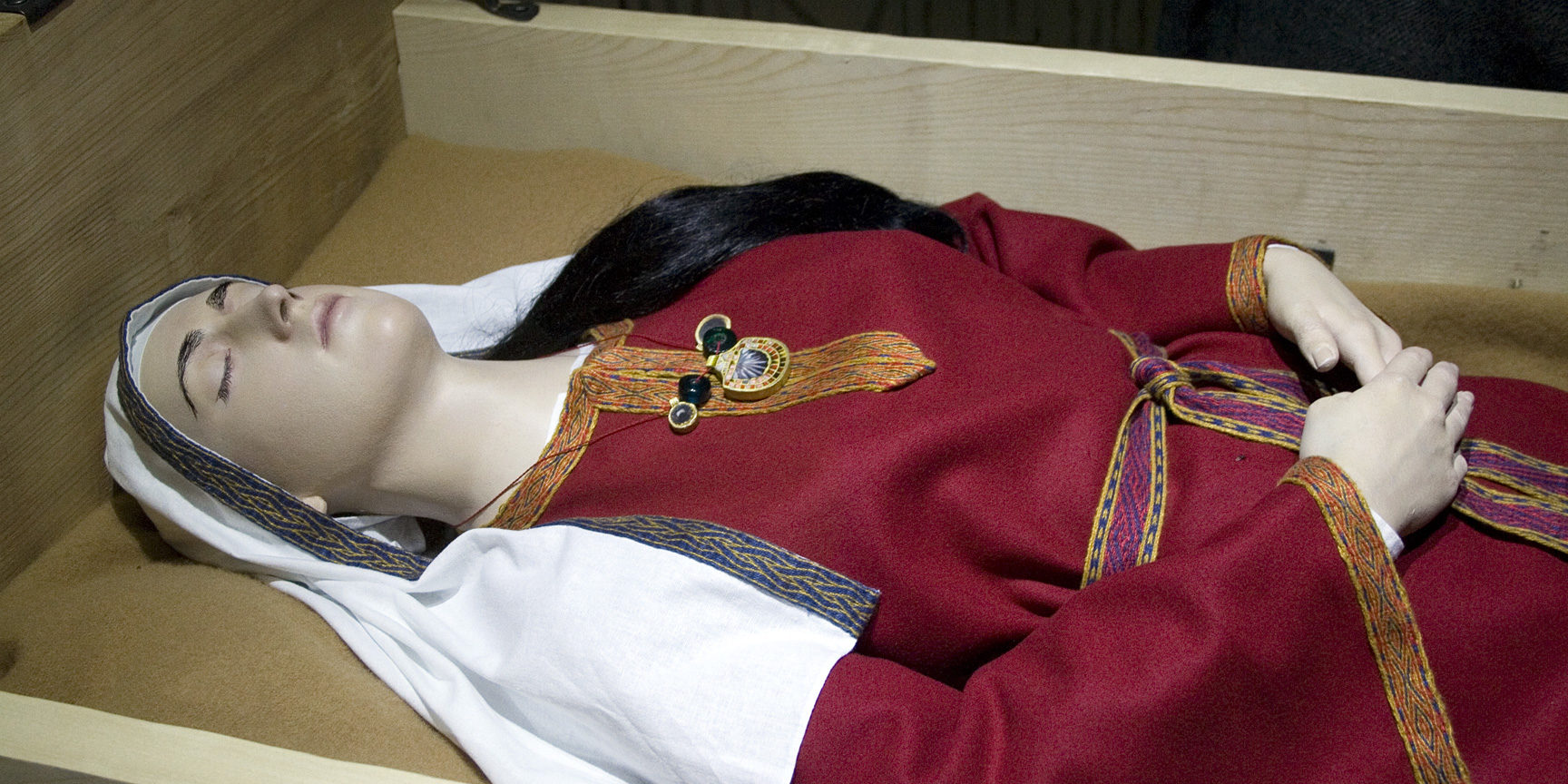This article focuses on the garment that was worn by Viking women together with the characteristic oval brooches. While it has been called many things by researchers over the years (e.g. trägerrock and hängerock), I will use what is currently thought to be the old Norse name for the garment (Ewing 2006, p. 37), namely “smokkr”.
Just as for other Viking garments, the archaeological evidence is fragmentary, and the scholars do not agree on the interpretation of what little evidence exists.
[…]The main excavation of Birka was conducted in the 1870s by Hjalmar Stolpe, yielding a large amount of textile material from the 9th and 10th century. The textile fragments were stored, and later analysed by Agnes Geijer (in 1938) and Inga Hägg (1974, 1986).
More than a hundred of the 128 graves with oval brooches contained fragments from the smokkr (Hägg, 1974). The majority of fragments are small fabric loops that once fastened the smokkr to the brooches. Some of these loops have fragments of the main part of the smokkr attached, thus making it easy to identify which fragments belong to the smokkr. This is the basis Geijer uses to identifiy smokkr fragments. However, most of the loops are unattached, and in these graves identification of smokkr fragments (aside from the loop) is made by Hägg based on where the fragment is found in relation to the different layers in the grave.






